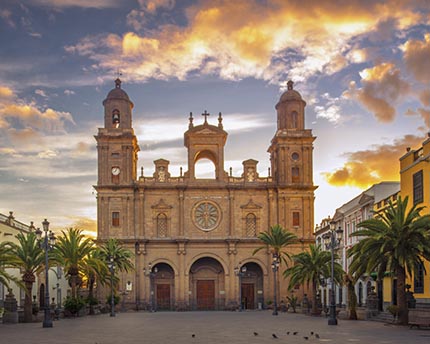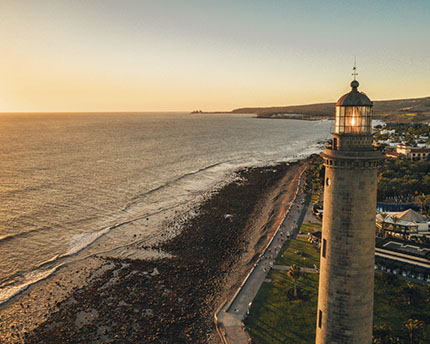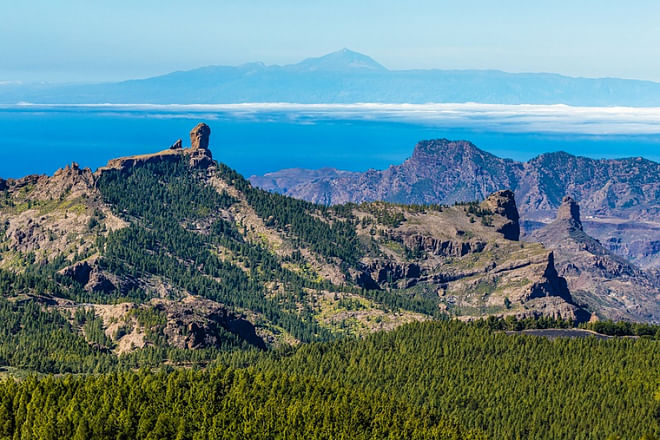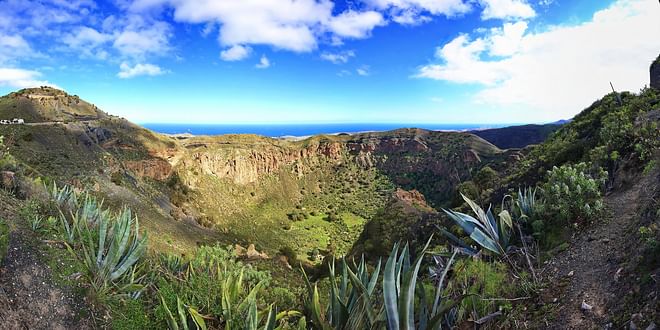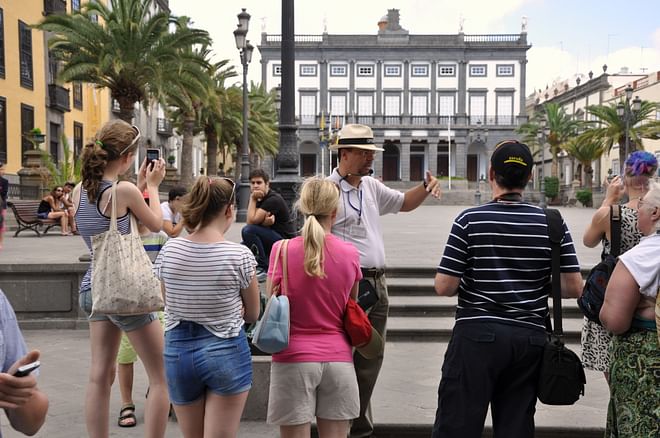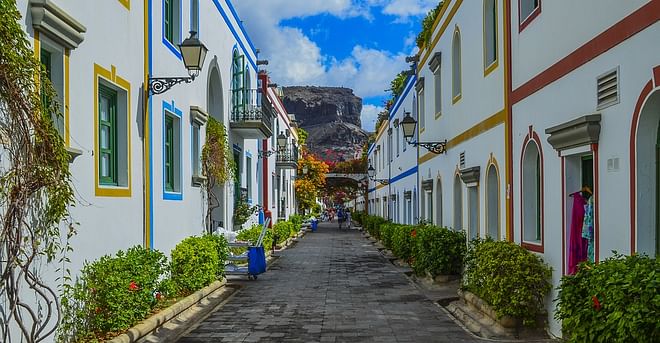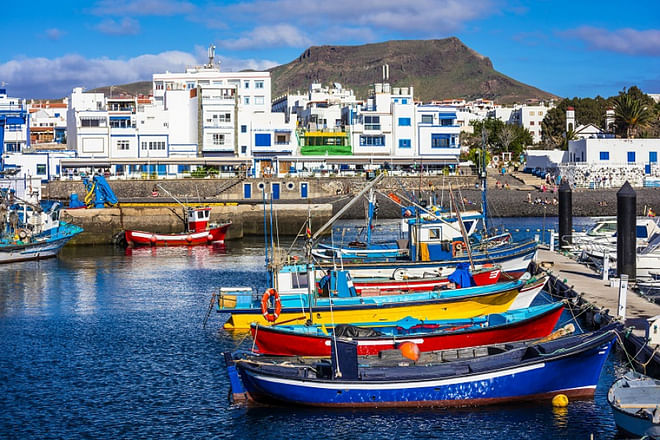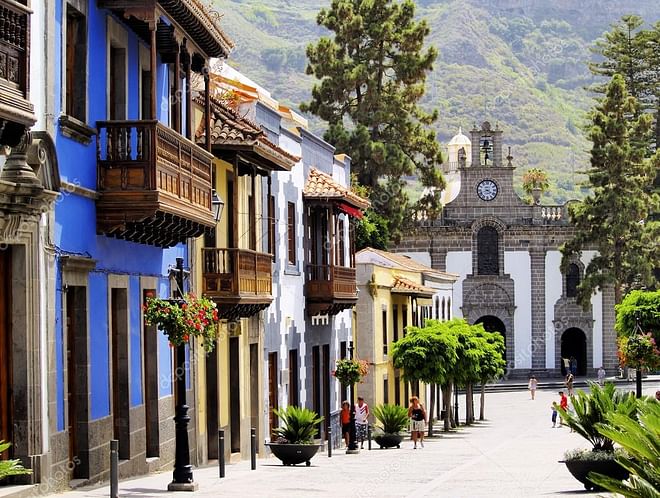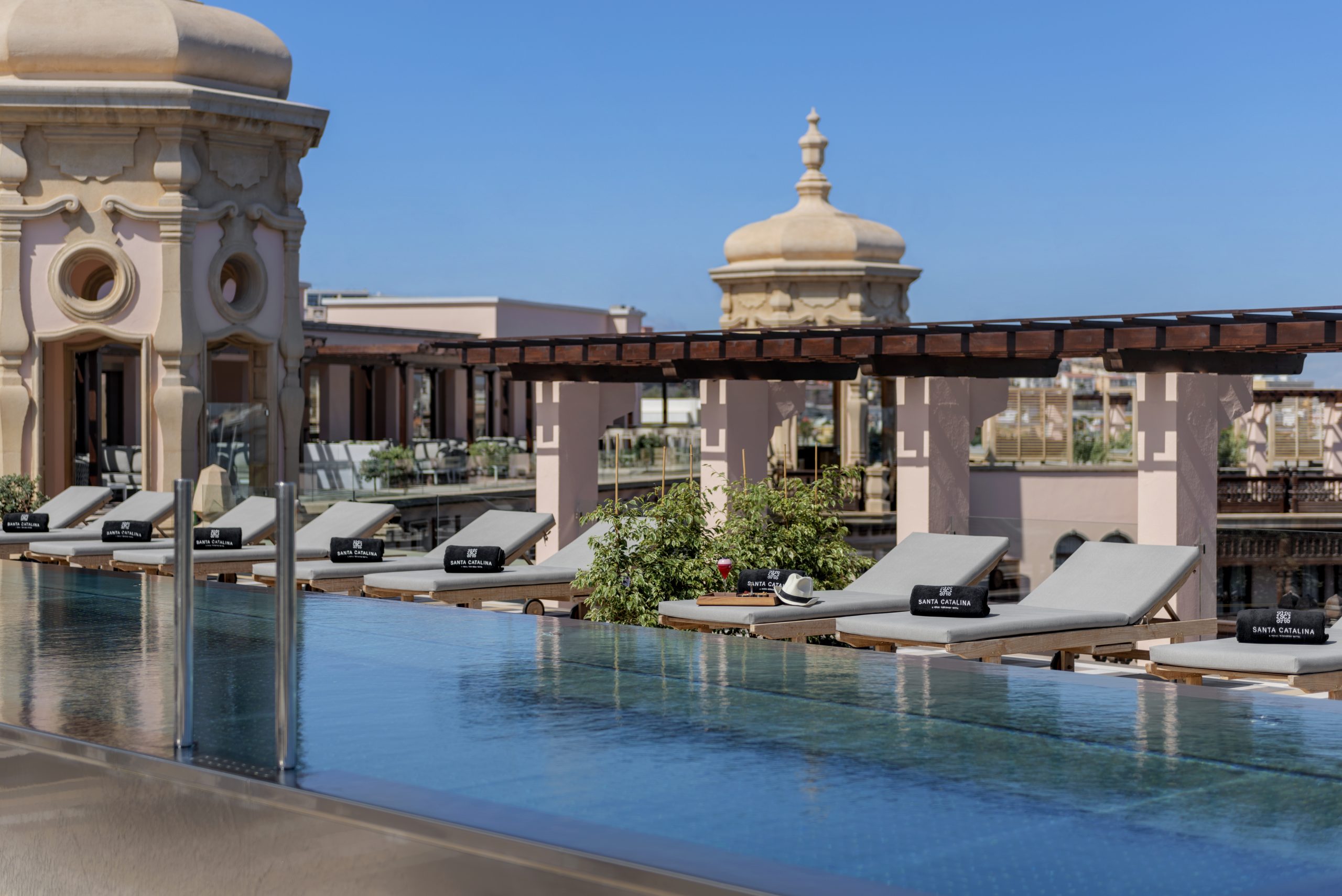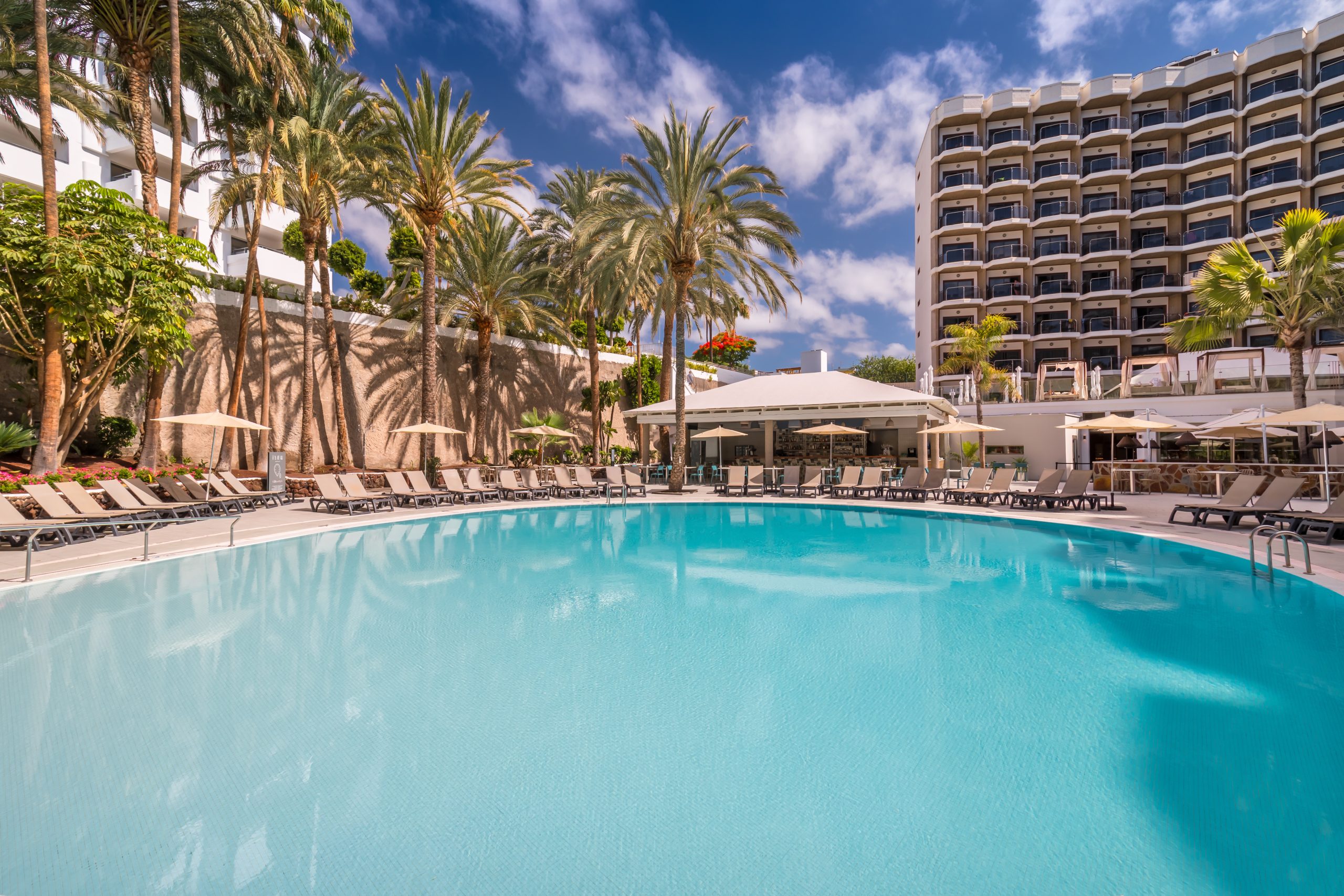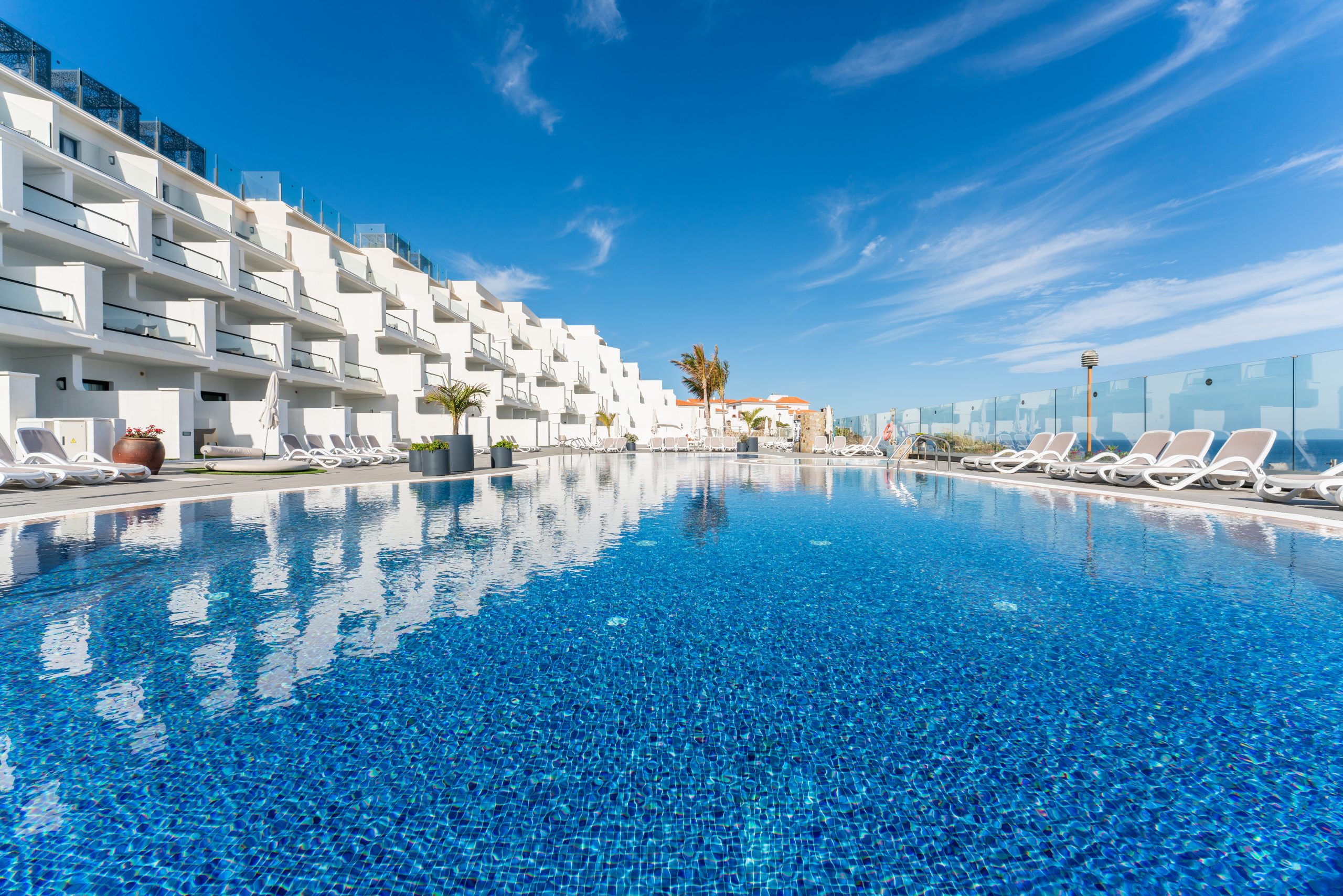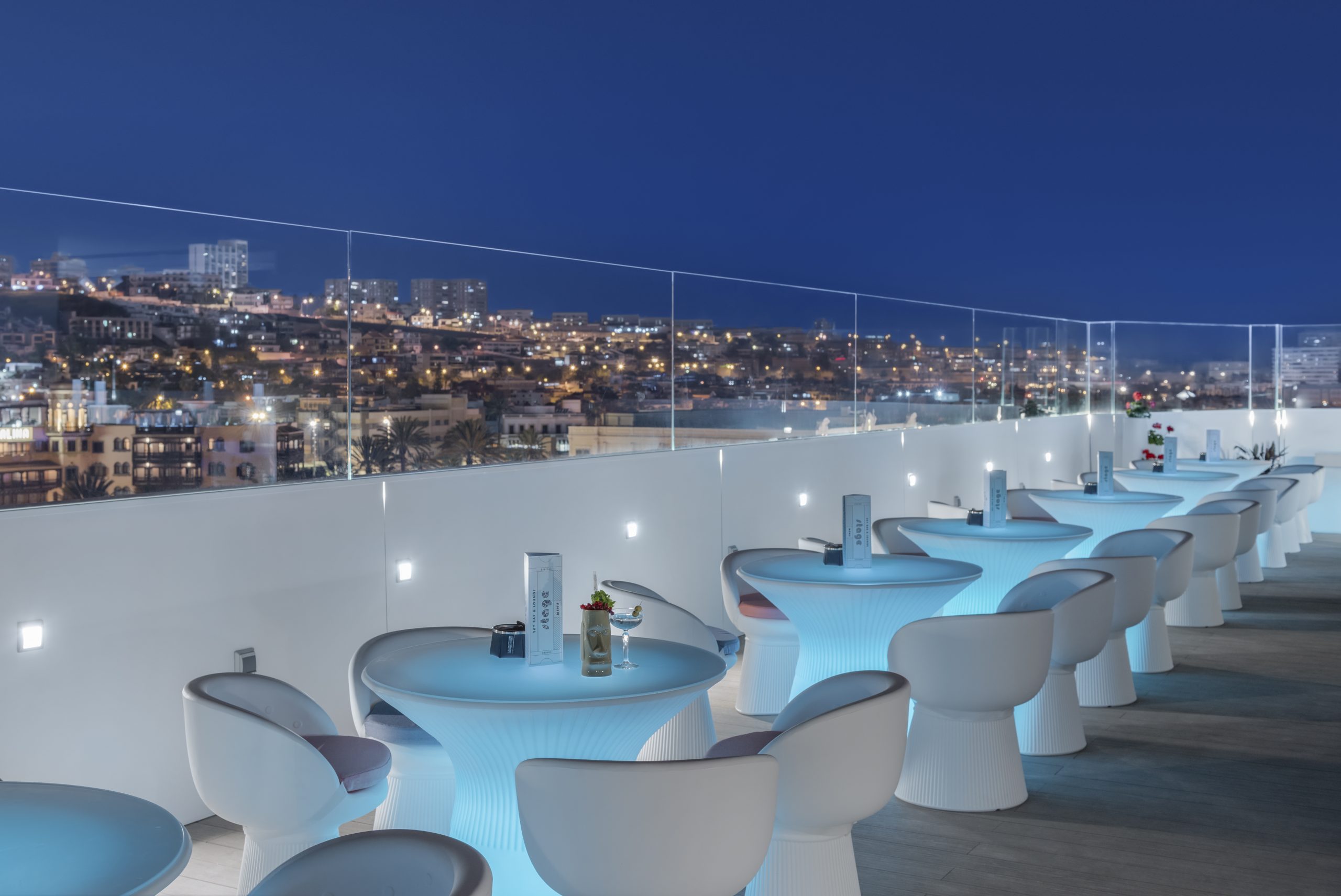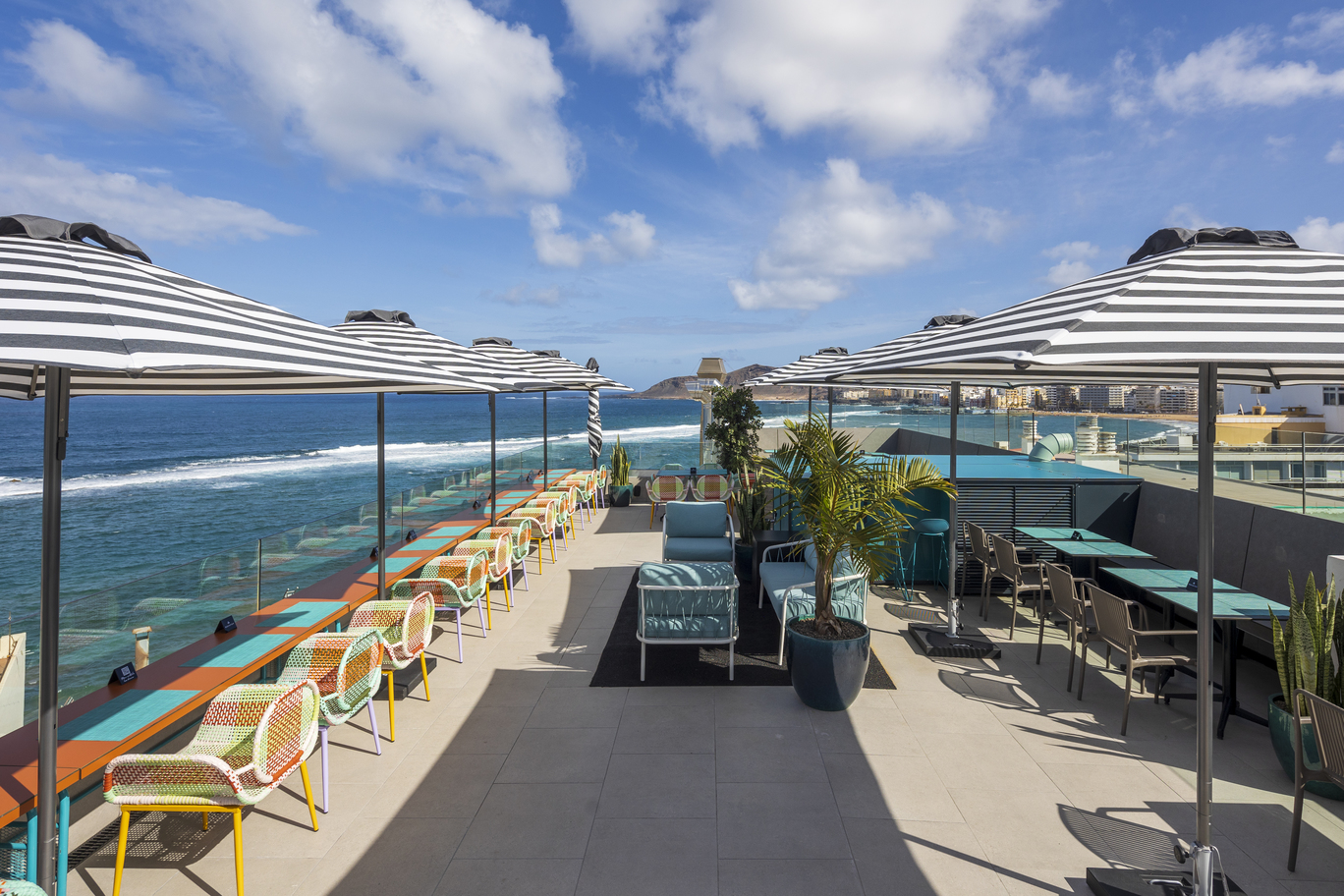Las Palmas de Gran Canaria – capital of Gran Canaria and the Canary Islands archipelago in general – is an exotic, cosmopolitan city that needs more than just a couple of days to make the most of it. And the best part? It doesn’t matter when you visit since the thermometer hovers around a glorious 22 degrees all year round.
The visitor who chooses Las Palmas will find an island paradise, happily isolated from the world, with beaches like the famed Las Canteras and volcanic craters such as the Bandama Natural Monument that flank picturesque neighbourhoods teeming with colonial houses, museums, exotic markets and traditional restaurants.
Walking the colourful streets of Las Palmas is much like travelling through time and space. The Castillo de la Luz, or Fortress of Light, and the Cathedral will take you back to the time of the Conquistadors and the foundation of the city in the 15th century. While a visit to the Vegueta Market will be like stepping into the old capitals of Latin America.
What to do in Las Palmas de Gran Canaria
Begin your tour in the founding neighbourhoods of Las Palmas – Vegueta and Triana. Their long streets, such as Triana Street and Chil Promenade, will guide you past the most interesting parts of the neighbourhoods and serve as gateways to other places of interest in the city at large.
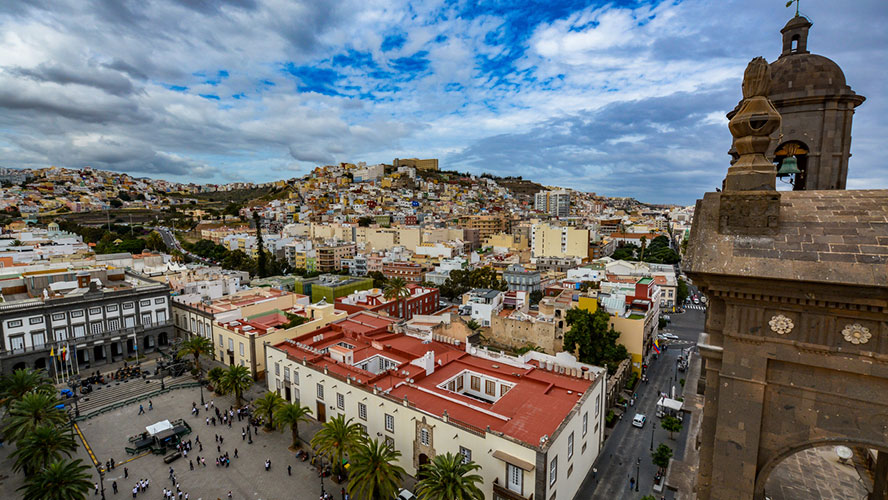
Canarian Museum
If tracing the city’s roots is at the top of your itinerary, then there is no better place to begin than the Canarian Museum. This museum is part of a wider scientific and cultural society that was founded in the Vegueta neighbourhood in 1879 with the objective of reclaiming much of the island’s Pre-Hispanic history that had long been forgotten. The museum contains a permanent exhibition dedicated to the aboriginal peoples of Gran Canaria. There you can feast your eyes on a large collection of early ceramic pots, terracotta figurines and pintaderas – rudimentary seals made from clay or wood.
Las Palmas Cathedral and the House of Columbus
Less than a minute’s walk from the Canarian Museum you will find the Cathedral of Santa Ana, widely considered to be the most important religious architectural monument on the archipelago. Located in Santa Ana Square, the cathedral dates back to 1497, just 14 years after the Christian rulers of Castile conquered the island. It was declared a monument of national historical and artistic significance in 1974 thanks, in part, to its Neoclassical façade and Gothic interior. Speaking of the cathedral’s interior, once inside you will find the Las Palmas Diocesan Museum of Sacred Art, which contains a large quantity of spectacular religious art.
Take a stroll behind the cathedral and you will discover one of Las Palmas most famous tourist attractions: the House of Christopher Columbus. Today, what is actually a group of buildings houses an institution founded in 1951 with the objective of studying and propagating Canarian culture. According to local records, it is also said that none other than Christopher Columbus stayed in one of these buildings on his way to the New World in 1492. The modern museum has two large patios and 13 exposition rooms, boasting Flemish paintings and etchings by the Spanish master Goya. Also, there is a specialist library containing 25,000 volumes on the Columbian era and which offers many seasonal activities, from courses to concerts.
Triana Main Street
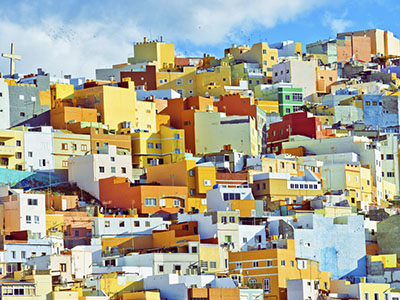
This street is the artery through which the lifeblood of the capital flows. Its array of clothes stores and restaurants draws a line through the historic neighbourhood of Triana, an area once inhabited by emigrants from Andalusia who created a ‘home away from home’ in the style of their native Seville. With such a pedigree, this street offers the visitor a unique opportunity to see how Las Palmas blends old and new; with its modern shops standing back to back with colonial houses and such historical architectural delights as the Perez Galdos Theatre and the Iglesia de San Francisco, or Church of Saint Francis.
Alfred Krauss Auditorium
Moving to the opposite coast, you will find Las Canteras beach and one of the most visited buildings in all of Gran Canaria: the Alfredo Krauss Auditorium. Built between 1993 and 1997, this modernist building is home to the Gran Canaria Philharmonic Orchestra, and hosts a number of cultural events such as the International Festival of Cinema and the Canarian Music festival. Inside, there is a small underground recital hall and an exhibition centre but the most stunning part of the building is the symphonic hall, with its enormous window that gives the audience a stunning view of the ocean as they listen to a world-class orchestra.
Where to eat in Las Palmas
The discerning foodie will find rich rewards for their efforts in Las Palmas. Stepping away from the more touristic restaurants will bring you traditional fare that will delight the senses – from the meat and vegetable soup ‘sancocho,’ to the heartwarming ropa vieja, rabbit in salmorejo, and a local cheese with a garlic sauce. One such unmissable restaurant is El Dorado (3 Calle Numancia). Located right in the centre of the seaside promenade of Las Canteras, El Dorado invites its guests to sample a variety of local delicacies, specialising in octopus and its famous potatoes with a garlic sauce.
Back in Triana, Las Lagunetas restaurant (16 Calle Constantino) welcomes its guests into a homely atmosphere where they can enjoy such succulent local dishes as stone bass with sautéed onions and toasted cornmeal, known locally as el cherne encebollado. If ‘local cuisine with a touch of innovation’ is more your style, then El Santo restaurant (23 Calle Escritor Benito Perez Galdos) is a must! There you will find a menu replete with such striking titles as black potatoes with garlic snow and curried octopus tempura.
The Beaches of Las Palmas de Gran Canaria
Gran Canaria has a total of 5 beaches, with Las Canteras being the most important as it lies in the city centre. Located on the eastern shore of the island, this 3km long beach boasts calm and warm waters 365 days of the year thanks to the short stretch of water between the island and the peninsula known as La Isleta. Just 200m from the shore lies an extensive reef that protects bathers from any strong waves while also being home to a unique ecosystem.
Following the path north, you will find El Confital beach. Although this beach is favoured by those who prefer to sunbathe nude, its isolated shore makes it ideal for surfing and other water sports, and its surrounding mountains make it a hot spot for hiking and cross running.






























































